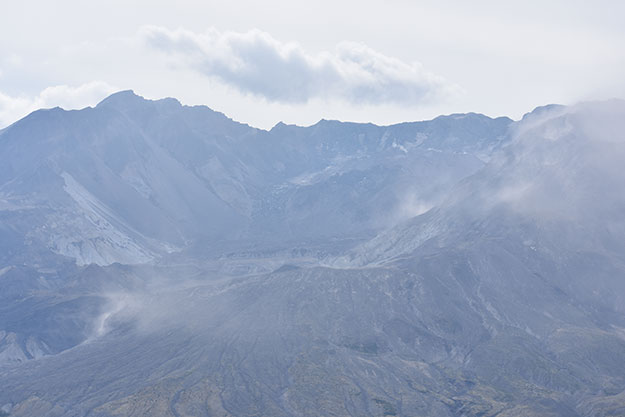There are a couple of different ways to explore Mount St. Helens, and this trip focuses on where to get the best views of the eruption site.
About a two-hour drive at its furthest point on the Spirit Lake Highway, which dead ends at the Johnston Ridge Observatory, the drive from Joint Base Lewis-McChord begins by heading south on I-5. Take exit 63 -- which is a slight shortcut -- then pick up the Spirit Lake Highway again. The route is beautiful and scenic, but because it is so remote, there are not many services along the way, so make sure you have a full tank of gas and pack a picnic.
Just before you arrive at Johnston Ridge Observatory, be sure to make a stop at the Elk Rock Viewpoint at milepost 33. Here, you'll get your first good view of Mount St. Helens, its natural beauty and the scars left from its eruption. National Park Discover passes are accepted for admission.
 While it is a bit of a walk just from the parking lot to the entrance to the observatory, this is the closest view of Mount St. Helens without hiking -- and the view is stunning. From this location you can really see how massive the May 18, 1980, eruption of this volcano was. Inside the observatory, there are plenty of exhibits about the still-active volcano and the big eruption.
While it is a bit of a walk just from the parking lot to the entrance to the observatory, this is the closest view of Mount St. Helens without hiking -- and the view is stunning. From this location you can really see how massive the May 18, 1980, eruption of this volcano was. Inside the observatory, there are plenty of exhibits about the still-active volcano and the big eruption.
Ranger talks are given each day beginning at 11:10 a.m., with the last talk beginning at 4:10 p.m. Talks in odd hours are about the 1980 eruption, and those on even hours are called Beyond the 1980 Eruption. The later covers a variety of subjects related to the volcano.
The observatory and interpretive center is open until the end of October. Beginning the first weekend in November, the Mount St. Helens Science and Learning Center (mshslc.org) opens on weekends only during the winter and serves as a visitor center.
There are a variety of hiking options. From the observatory, you can take the Boundary Trail to Harry's Ridge, a 6.6-mile roundtrip. It is a moderate hike with only 400 feet in elevation change, and it's the only place to see Spirit Lake from this side of the mountain.
Not far from the observatory is the Hummocks Trail parking lot, near the site of where the top of Mount St. Helens ended up. It is a three-mile roundtrip hike, and the rangers say it is the only place to hike the peak of Mount St. Helens because the peak is now on the valley floor.
Just a short distance from the observatory is Coldwater Lake, which was formed from the eruption of Mount St. Helens. The lakeside has a very nice picnic area with rest rooms, and there is also a relatively flat trail around the lake.
From here, head back down Spirit Lake Highway to milepost 19. On the left is a large Sasquatch statue, which is a great photo opportunity. There is a gift shop and snack bar. Hours vary as the season draws to a close. Just past this on the right is the Fire Mountain Grill at 19 Mile House. It is open until the weekend before Halloween each year and is known for its homemade cobbler. Well worth the stop.
Continue down Spirit Lake Highway until you reach the Mount St. Helens Visitor Center. From the center, a lovely .6-mile loop trail winds through wetlands bordering Silver Lake. The boardwalk vantage provides good views of a variety of aquatic plants and waterfowl. Inside the visitor center, a large, step-in model lets you go "inside" of the volcano, and a movie on the volcano is screened twice an hour.
This interesting and picturesque day trip is well worth the drive, and cooler temperatures bring fewer crowds, making fall the perfect time of year to visit Mount St. Helens.




Read Comments